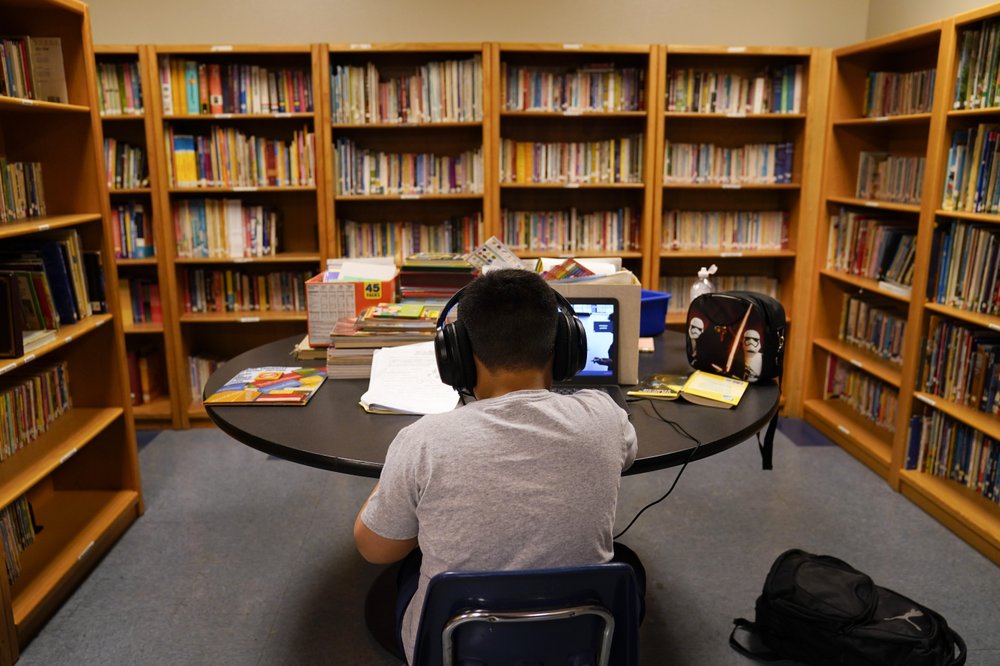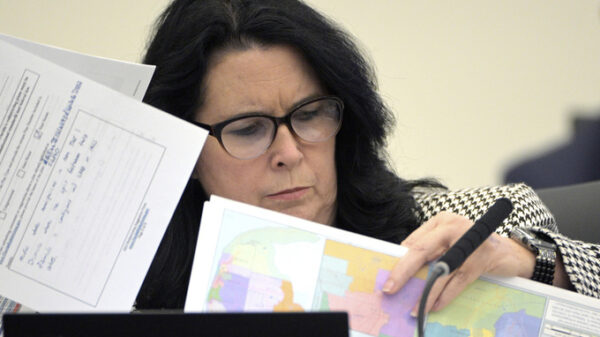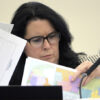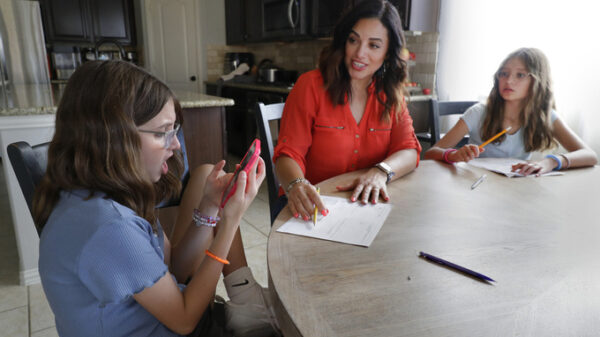FILE – In this Aug. 26, 2020, file photo, a Los Angeles Unified School District student attends an online class at the Boys & Girls Club of Hollywood in Los Angeles. A new federal survey finds that nearly half of the nation’s elementary schools were open for full-time, in-person instruction last month, but the share of students learning in-person has varied greatly by region and race. (AP Photo/Jae C. Hong, File)
Nearly half of U.S. elementary schools were open for full-time classroom learning as of last month, but the share of students with in-person instruction has varied greatly by region and by race, with most nonwhite students taught entirely online, according to a Biden administration survey.
For the White House, the results of the national survey released Wednesday mark the starting line for President Joe Biden’s pledge to have most K-8 schools open full time in his first 100 days in office. But they also show that he never had far to go to meet that goal.
Among schools that enroll fourth graders, 47% offered full-time classroom learning in February, while for schools that teach eighth-graders, the figure was 46%. The results suggested that at least some students weren’t opting in.
In total, about 76% of elementary and middle schools were open for in-person or hybrid learning, according to the survey, while 24% offered remote learning only. The percentage of students spending at least some time in the classroom has probably increased since February, when coronavirus rates were just coming down from a national surge.
Education Secretary Miguel Cardona said the findings, while encouraging, also showed “critical gaps” for in-person learning, especially for students of color.
“While schools continue to show us what’s possible as they work to open their doors and meet students’ needs, we know that we still have a lot of ground to go,” Cardona said. “We owe it to our students — especially students in underserved communities and students with disabilities — to get all our schools opened safely and to meet the social, emotional, mental health and academic needs of all students.”
Before Wednesday’s school reopening summit, the administration announced it was releasing $81 billion in education assistance from the $1.9 trillion virus relief bill.
The survey findings establish a baseline data set that the administration plans to update each month to show how many U.S. schools are teaching in-person, online or through a combination. The government did not previously collect such information.
The findings are based on a survey of 3,500 public schools whose student bodies include fourth graders, along with 3,500 schools that serve eighth graders. Forty-four states agreed to participate; six states declined. The survey asked schools about their teaching methods as of February but gathered other data as of January.
The survey casts new light on a period of particularly bitter debate in the school reopening process. In January, officials in California, Chicago and other places were in stalemates with teachers over reopening plans,. Vaccinations were often a sticking point.
Since January, the push to reopen has gained steam in many areas. The Centers for Disease Control and Prevention issued a road map to reopening in February. This month, the CDC relaxed guidelines around social distancing in schools. Under pressure from Biden, dozens of states are now focusing on giving COVID-19 vaccines to teachers and other school staff.
As more schools invite students back to the classroom, many parents are conflicted, according to a poll from The University of Chicago Harris School of Public Policy and The Associated Press-NORC Center for Public Affairs Research. It found that a majority of parents are at least somewhat concerned that in-person instruction will lead to more people being infected, but a slightly larger share is at least somewhat concerned that students will face setbacks in school because of the coronavirus pandemic.
In addition to tracking school teaching methods, the federal survey also tracks how many students have enrolled in each type of learning.
In January, the survey found, 38% of fourth graders enrolled in full-time, in-person learning, compared with 28% of eighth graders. Larger shares of students were entirely remote, with 43% of fourth graders and 48% of eighth graders learning away from school. It was not clear what share was learning online by choice and how many students were in schools without in-person options.
There were stark differences based on where students live, reflecting the regional battles that have played out as cities debate how and when to reopen schools.
In the South and Midwest, where schools were the quickest to reopen, just under 40% of eighth grade students were enrolled full time in classroom instruction in January. In the West and Northeast, the figure was about 10%.
Across all regions, students in rural areas and towns were far more likely to be back in the classroom full time compared with students in cities and suburbs.
In a further illustration of the pandemic’s uneven impact, the survey found striking differences based on students’ race. Among fourth graders, almost half of white students were learning fully in-person, with just over one-quarter learning online. Among Black and Hispanic students, nearly 60% were learning entirely remotely.
The difference was even wider among students of Asian descent, with 68% remote and just 15% attending fully in-person.
Similar disparities have been uncovered in many cities, raising alarms among education advocates who fear the pandemic is worsening racial inequities in education. The administration has pledged to confront racial gaps in education and is urging schools to prioritize the issue as they spend the billions in recently approved relief aid.
As of January, the survey also found that students with disabilities and those who are learning English were not being brought back to the classroom at significantly higher rates than other students. Just 42% of those with disabilities and 34% learning English were enrolled in full-time classroom learning, compared with 38% of all students.
Even so, more than 40% of schools reported on the survey that they were giving priority to students with disabilities, who often have more difficulty with remote learning.
Among students learning online, the amount of time spent with a live teacher also varied greatly, the survey found. Roughly one-third of schools offered more than five hours a day of live instruction, but another third offered two hours or less. Among schools serving eighth graders, 10% were offering no live instruction at all.
The survey does not include high schools, which weren’t included in Biden’s reopening promise and pose additional challenges as they work to reopen. Younger children are less likely to get seriously ill from the coronavirus, and education experts say they have the greatest need for in-person learning.
The Education Department said it will issue updated data from the survey each month through July. The information is published on a dashboard on the agency’s website.
Copyright 2020 Associated Press. All rights reserved.






























You must be logged in to post a comment Login